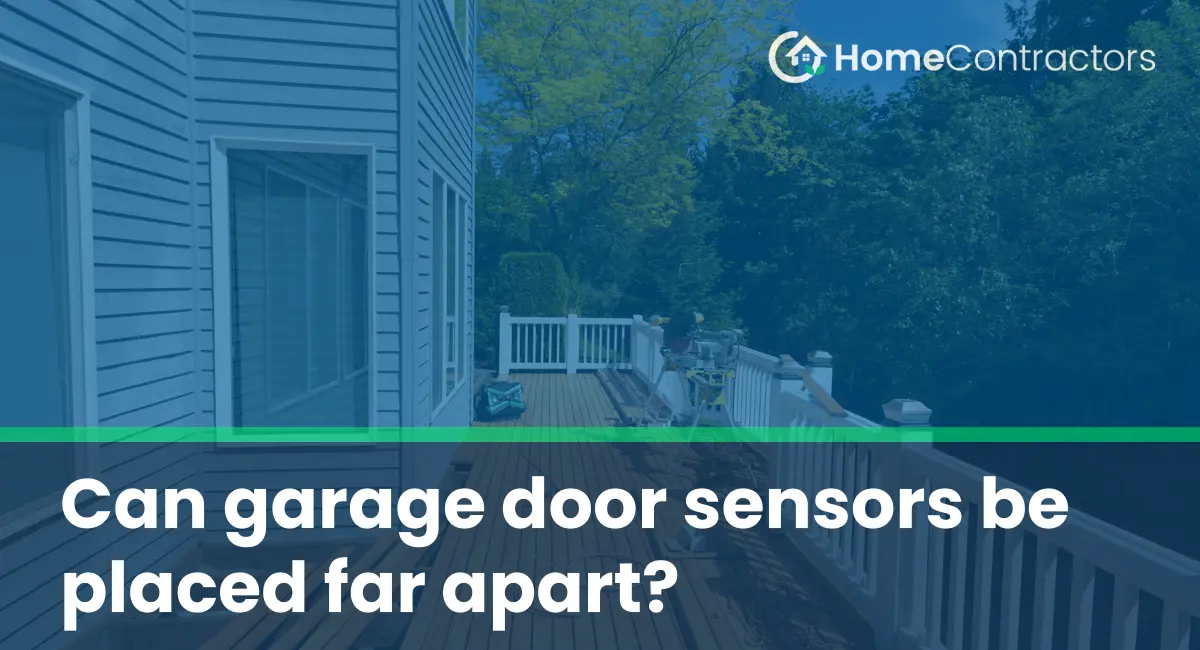Garage door sensors play a crucial role in ensuring the safety and security of our homes. These sensors are responsible for detecting any obstructions or movement in the path of the garage door, preventing accidents and damage. However, there is often confusion about the ideal placement of these sensors. One common question is whether garage door sensors can be placed far apart. In this article, we will explore the factors to consider and the potential implications of placing garage door sensors at a significant distance from each other.
Understanding Garage Door Sensors:
Before diving into the topic of sensor placement, let’s briefly understand how garage door sensors work. Typically, these sensors consist of two components – a sending unit and a receiving unit. The sending unit emits an invisible beam of infrared light to the receiving unit. When this beam is interrupted by an object, such as a person or an obstruction, the receiving unit detects the interruption and signals the garage door opener to stop closing or to reverse its direction.
The Importance of Proper Sensor Placement:
Proper sensor placement is crucial for the effective detection of obstructions and the prevention of accidents. When sensors are installed correctly, they help ensure that the garage door does not close on a person, vehicle, or any other object, potentially causing injury or damage. Placing the sensors too far apart may affect their ability to detect obstructions accurately, compromising the overall safety and functionality of the system.
Factors to Consider:
Several factors need to be considered when determining the placement of garage door sensors, including:
- Manufacturer’s Guidelines: It is essential to follow the manufacturer’s guidelines and recommendations for sensor placement. Different sensor models or brands may have specific requirements for optimal performance.
- Distance: The maximum recommended distance between the sending and receiving units is typically specified by the manufacturer. Going beyond this distance may result in reduced effectiveness and potentially render the safety feature ineffective.
- Alignment: Sensors must be aligned correctly to ensure the infrared beam between them is unobstructed. Misalignment can lead to false detections or prevent the sensors from functioning altogether.
- Environmental Factors: Environmental factors, such as sunlight, extreme temperatures, or dust accumulation, can affect sensor performance. Consider these factors when determining optimal sensor placement.
Implications of Placing Sensors Far Apart:
Placing garage door sensors too far apart can have significant implications for their functionality. Here are a few potential consequences:
- Reduced Safety: When sensors are placed far apart, they may fail to detect smaller obstructions or slow-moving objects, increasing the risk of accidents and injuries.
- Inconsistent Performance: Sensors placed beyond their recommended distance may have compromised reliability. They may detect obstructions inaccurately or fail to detect them altogether, leading to an inconsistent and potentially unsafe garage door operation.
- False Detections: In some cases, placing sensors too far apart can result in false detections. These false detections can cause unnecessary interruptions to the garage door’s operation, leading to frustration and inconvenience for homeowners.The placement of garage door sensors is critical for ensuring the safety and functionality of these systems. While it is generally recommended to follow the manufacturer’s guidelines, placing sensors far apart can compromise their ability to detect obstructions accurately. By understanding the factors to consider and the potential implications, homeowners can make informed decisions about sensor placement, ensuring their garage doors operate safely and efficiently.
